There are many criteria by which the greatness of a city might be judged, but the height of its skyscrapers and the number of residents are not among them. For me, the nobleness of a city is measured by its devotion to the arts, so when I read about Amsterdam’s ARTZUID 2015, the biennial display of outdoor sculptures from some of the world’s greatest artists, I knew that this Dutch city had to be on my travel itinerary.
My timing could not have been better. I had booked a Viking River cruise from Amsterdam to Budapest, so I tacked a few days onto my trip to attend the event’s opening press conference and have an early peek at the sculptures. As the only person at the press gathering who didn’t speak Dutch, I was shepherded to the head table by Maarten Bertheux, who kindly translated snatches of the presentation by his fellow co-curator, Rudi Fuchs.
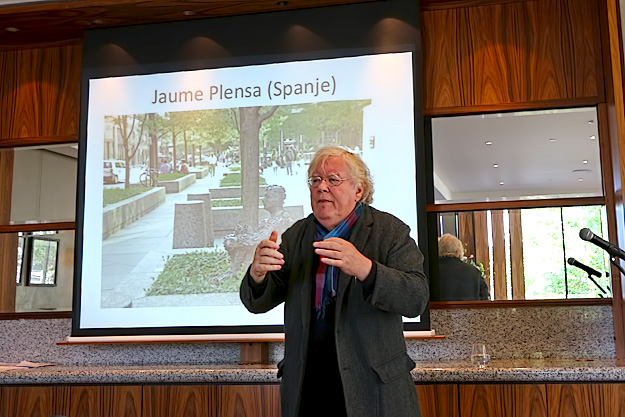
Now in its fourth iteration, ARTZUID is unique among outdoor sculpture shows in that it invited 21 of the world’s finest sculptors to display multiple works, something normally only done in a museum setting. Fuchs imagined sculptures promenading along the broad, leafy medians of Apollolaan and Minervalaan boulevards. “As the greenery of the trees was so high up, the sculptures would need to be majestic and epic. I envisaged people wandering among them and looking up at these robust figures. I could also see tall sculptures moving among the people. But perhaps my imagination was getting the better of me.”
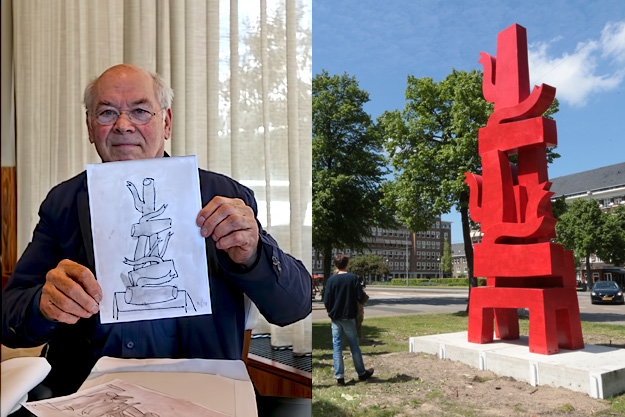
Across the table, Klaas Gubbels, with limited English at his disposal, smiled at me and held up a pencil sketch of the concept for his sculpture. Best known for the teapots and coffee pots that have populated his paintings for years, Gubbels has carried this theme into his Kaskade, a massive scarlet sculpture of stacked coffee pots, which stands prominently at a major intersection on Minervalaan.
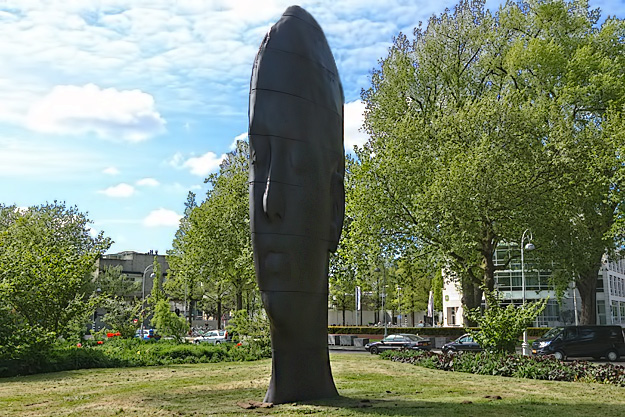
Having recently seen the Jaume Plensa bronze that was installed at Chicago’s Millennium Park, I immediately recognized Duna, the elongated, oblong head of a young girl as quintessential Plensa. At the far southern end of the route, Plensa’s take on the human form reappeared as seven Heart of Trees sculptures, each a person hugging a tree. KAWS’ behemoth cartoon-like character holds his hands over his eyes, a Mickey Mouse unwilling to see the grittiness of the world, while Frank Stella’s twin stars, one in polished galvanized steel, the other a delicate wooden frame, put me in mind of colliding galaxies.
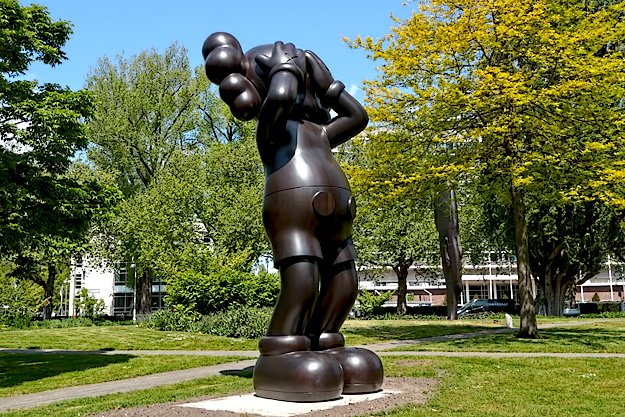
Sculptures undulated down the boulevards, revealing additional works by Georg Baselitz, Tony Cragg, Mimmo Paladino, John Chamberlain, Georg Herold, and Markus Lüpertz, among others. Fuchs personally sited the sculptures to create this serpentine effect. “As you progress along the route different sculptures come into view in a similar way: you keep seeing the next figure appear in the distance. The route slowly zigzags.” Walking among the sculptures I noticed the interplay of light that curiously affected the way a work could be interpreted. They were imbued with an almost human movement as the sun played hide and seek with clouds. Fuchs calls the effect “the fluid interplay between contour and volume that gives these sculptures their unique physicality.”
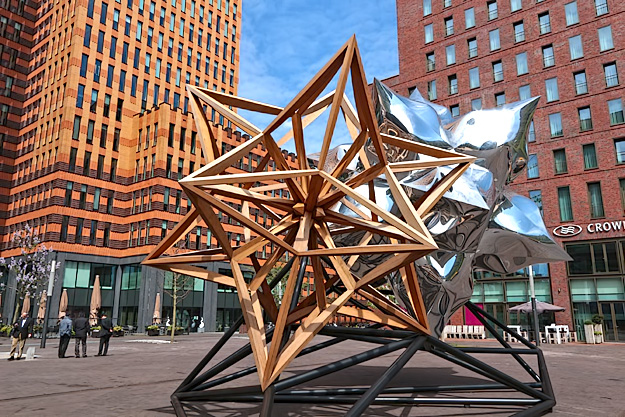
Several hours after I began the route, I still had not seen all 66 of the sculptures, but I had seen enough to know that Amsterdam is truly one of the great cities of the world.
Guided tours in English, led by professional art historians and artists, are available from Thursday through Sunday each week throughout the duration of the show. English speakers will have the choice of a 1.5 hour tour, beginning at 11:30 a.m., or a three-hour tour, beginning at 10 a.m. The latter combines a tour of the modern and contemporary artworks at the Stedelijk Museum with a walking tour of ARTZUID. There is also an app available that includes an audio tour. Admission is free, however there is a fee for the ARTZUID guided tours. The sculptures will remain on display through September 20, 2015.
